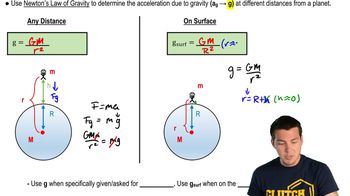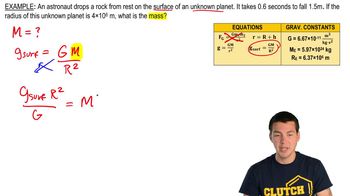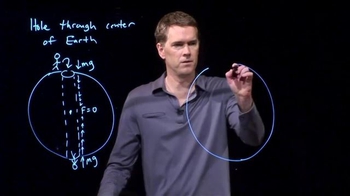8. Centripetal Forces & Gravitation
Acceleration Due to Gravity
8. Centripetal Forces & Gravitation
Acceleration Due to Gravity
Additional 5 creators.
Learn with other creators
Showing 8 of 8 videos
Practice this topic
- Multiple Choice
You stand on the surface of a mysterious planet with a mass of 6×10<sup>24</sup>kg and measure the surface gravity to be 7 m/s<sup>2</sup>. What must the radius of the planet be?
- Multiple Choice
How far would you have to be above Earth's surface for g to be ½ of its surface value?
- Multiple ChoiceSuppose the lengths of your upper arm, forearm, and hand are 30 cm, 25 cm, and 15 cm, respectively. Using the information on centers of mass from Figure 7.31, calculate the torque from gravity on your arm (including the hand) when it is outstretched, horizontally.
- Open QuestionA recently discovered extrasolar planet appears to be rockier and denser than earth. It is 16 times as massive as earth, but its diameter is only twice that of earth. What is the free-fall acceleration on the surface of this planet?
- Open QuestionWhat is the free-fall acceleration at the surface of (a) the moon and (b) Jupiter?
- Open Question(a) At what height above the earth is the free-fall acceleration 10% of its value at the surface?
- Open QuestionTitania, the largest moon of the planet Uranus, has 1/8 the radius of the earth and 1/1700 the mass of the earth. (b) What is the average density of Titania? (This is less than the density of rock, which is one piece of evidence that Titania is made primarily of ice.)











